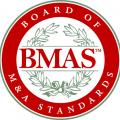Overlooked Resources Are Often IT
By William Blandford, Managing Director at Blandford Associates and Member of the Board of M&A Standards

When a large company acquires a small company, one of the more overlooked resources and possibly the most valuable player (MVP) in achieving synergies as quickly as possible is the IT person of the company being acquired.
The small company may at most have one IT person who has implemented and supports:
- the IT infrastructure;
- The Internet Service Provider;
- Firewall equipment and settings;
- Password management processes and software;
- Intrusion detection/ remediation;
- (Possibly) PC images;
- PC software and tools, such as email;
- Server equipment for applications and tools;
- Physical security for the room where the server equipment is housed, and possibly physical security for the small company office;
- IT Support and/or 3rd party IT support provider, and
- (Possibly) application software integration and/or maintenance and support
The detail knowledge of what IT infrastructure, what software, and what parameter settings are in place is critical to create and implement speedy integration into the buying company’s IT infrastructure. The IT person in the small company usually has the unique knowledge and skillset to manage the environment and quickly contribute to the integration process. And, while small companies may identify a “backup” for the IT person, that backup may not have the current detail knowledge of the IT environment needed to migrate to the acquiring company’s IT environment.
There are many projects that the IT person in the small company needs to accomplish, once the deal is announced, to achieve the synergies of the deal as quickly as possible. While it may not be necessary to accomplish total IT integration as soon as possible, since only part of the IT integration may be necessary to achieve the early synergies of the deal, the projects that require the IT person’s active participation may include:
- Modifying firewall changes to support the implementation of an initial connection (e.g. site to site) between the acquiring company and the small company being acquired on or about Day 1;
- Loading, testing, and implementing the software and process onto the small company’s PC’s to remotely connect to the acquiring business on or about Day 1;
- (Possibly) implement the changes needed to forward the small company’s email to the acquiring business email on or about Day 1
- Work with the acquiring company’s IT organization to develop a migration plan to securely migrate the small company’s IT infrastructure capability into the acquiring company’s IT environment, followed by a small matter of implementation; J
- Work with the Business and/ or Product Development IT organizations of the acquiring business to transition/ migrate documents, email, applications, and application data.
In addition to the amount of work required of the IT person of the small company, the IT person could easily feel overwhelmed by joining a large IT organization and being slotted into specific responsibility that is only a small portion of the IT environment but with a span of influence that is much larger from the current small company environment. There is the possibility that this IT person could decide, shortly after the deal is announced, that working in a big company environment is not for him/ her, in which case he/ she could leave before any of the previously listed projects are implemented, or even started. If he/ she leaves before or around Day 1, the ability of IT to quickly integrate both the infrastructure and applications to enable the deal synergies would be severely impacted.
The delay in IT integration could delay the achievement of deal synergies by months, while another IT person (e.g. consultant) is identified, brought in, and given time to learn the details of the current environment.
So what can be done?
Early evaluation of the IT person could be done during due diligence, if the IT person is aware of the possible deal. At a minimum, getting input from the Senior Management in the small company during due diligence can set the groundwork for the further evaluation after the deal is announced. If the IT person is not aware of the deal until announcement, the evaluation could start right after the deal is announced, when initial discussions begin about the current environment and what needs to be done to support the deal synergies. If evaluation recognizes that the IT person is a valuable resource that is critical to the early integration efforts and achievement of synergies, a couple key actions can be taken to help recognize and reward the IT person for the integration efforts he will do:
- The use of a bonus/ retention arrangement, that may be different from other key retention personnel in that it only needs to last as long as the major components of integration are achieved, frequently 3-6 months. This amount could be included as part of the deal costs and included in the project budget.
- Review the current IT and/or other organization needs to have a list of possible opportunities that the IT person might fit into.
- Discuss with the IT person during the initial discussions after announcement that there can be a future for him in the larger IT organization after integration. Review some of the possibilities identified to peek his interest. Then, given the projects that will take place during integration, the IT person will have a chance to interact with several of the IT functions that may influence where he can best contribute after integration.
With the above steps to encourage the IT person to actively participate in integration and beyond, IT infrastructure integration can proceed on a timeline that can provide the underlying foundation for fast synergy achievement.
________________________________________________________________________________________________
William Blandford is the Managing Director of Blandford Associates, aimed at Practical IT M&A Due Diligence and Integration. He has participated in over 50 transactions with two major High-Tech companies. He successfully integrated more than 30 acquisitions and led the divestiture of 20 businesses. William has extensive experience in acquisitions, divestitures, spin-offs, and internal reorganizations across the globe with a primary focus on IT. William is also a member of the Board of M&A Standards.

